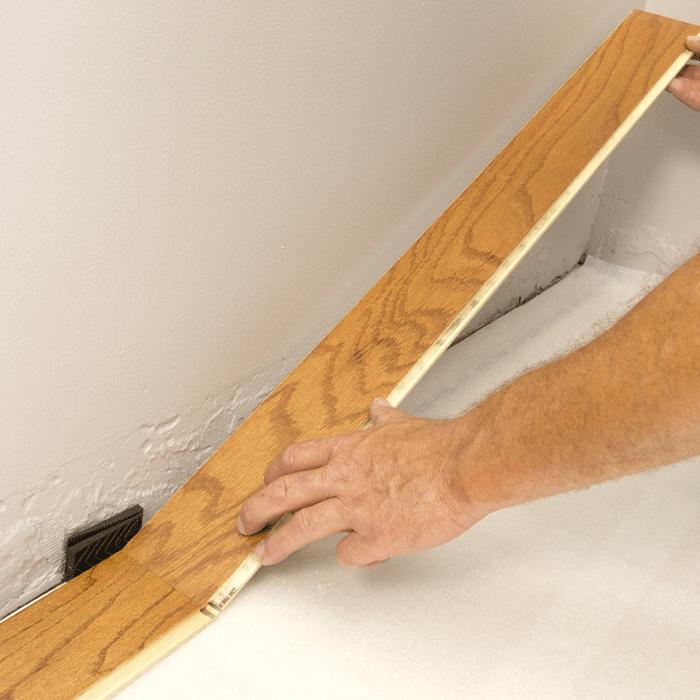When a homeowner walks into a big box store or a carpet floor store, Oftentimes you are introduced to a floating engineered wood floor or a laminate floor at the beginning of your wood floor search.
Here are some common reasons which floating floors are recommended:
• It is DIY friendly
• It takes fewer tools to install
• It can be floated on any existing floor coverings
While these are all true regarding a floating installation, it may not be the best possible option for your particular flooring project. Floating engineered wood floors or laminate floors require a new but equally challenge skill set and knowledge for a successful installation. Here are a few conditions that homeowners often fail to consider before deciding upon a floating wood floor:
1. Your subfloor has to be flat and level to no more than 3/16” difference in 10 feet diameter. If the dips and humps are not dealt with before installation, the finished floor could feel bounce and hollow spots.
2. A quality pad underlayment makes a difference to the final result of your floating floor. A premium pad as Floor Muffler with a high STC and IIC ratings will deaden the sound of your flooring and generate a vastly improved sound when walking on top similar to a nail down installation
3. It is also very important to choose a quality floating floor with excellent milling. Please keep in mind that it is always a challenge to install thin 5/16” or 3/8” engineered floating wood floor or laminate floor. For great results, I would start with at least 1/2” floor with 2 mm surface wear layer since the weight of your floating floor will make a difference on the performance the additional hardwood adds a hefty base.
4. Last but not least, you should expect to accept the look and feel of overlap transition moldings and drop in vent registers for floating wood or laminate floor project. The overlap moldings are for your floating floors to expand and contract beneath. Drop-in metal or wood vents can be used on any type of floor coverings.
Closing Thoughts
If you still hold a “yes” attitude to floating floors, you now have a much higher chance to achieve a successful floating floor project. Otherwise, you should seriously consider another type of installation for your solid or engineered wood floor, especially if suitable sub-floors are in your existing space. In the next session, we will discuss why most of the hardwood floor professionals favor this type of installation over others…
To compare installation methods with nail or staple down see Part 2.

